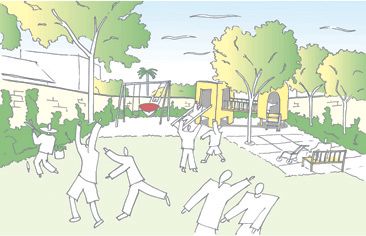
For a little over a year I have been contributing to the Long Beach Post through this column, and it bears noting that my very first post was an introduction to Armory Park, a project on which I’d already been working for several years. Before being given this soapbox to propose various concepts for the city, I had been hustling other projects like the rest of you: one email, meeting, and phone call at a time. Some of these projects garnered some interest; others never gained traction. A few, however—just a few—might actually become realities. One of those projects on the brink of realization involves creating a park, but not
This past weekend, I attended the initial community design meeting-cum-brainstorm session for this new mini-park, a meeting that brought together Parks and Recreation staff, a landscape architect, and members of the community. As I sat in the crowd, a realization set in: of all those projects that float around
Until two years ago, there had been significant blight on the west side of
On occasion people would approach the owner to purchase the property. Some were seeking profit; others sought to restore a historic property, while still others hoped to save the community from an eyesore. Finally, the time came when weeds were the least of this property’s problems; serious safety concerns emerged as portions of the apartment building closest to the street threatened to collapse onto sidewalk. The property was brought before the city’s condemnation and building safety board, which voted to demolish it.
This decision let to mixed emotions in the community: there was a desire to restore the historic structures, but at the same time a justifiable desire to be rid of the blight. When the day came that the buildings on the property were methodically disassembled as only a backhoe and bulldozer can, residents picked through the buildings’ interiors trying to retrieve rare vintage hardware or valuable wood doors. When it was all done, the community was left with a dirt lot, a blank canvas for the future.
At that point, the community sprang into action to make the best of what had been a frustrating situation. We started imagining possibilities for this 1/3 of an acre in our neighborhood. We thought about it as a place to relocate endangered bungalows in the path of new downtown development (as had taken place in the
While the argument was convincing, there was a hitch: the land was not for sale, and at the time the city’s Redevelopment Agency hesitated forcing negotiations for the property. Additionally, significant resources were being dedicated to property acquisition in other parts of the city, leaving little funds for such an endeavor in the Craftsman Village Historic District. Though only a sliver of our neighborhood was part of her council district, we found a thoughtful ear and a vocal champion in Councilwoman Bonnie Lowenthal. She ensured that despite budget constraints, the park was not forgotten.
Six months later, there were a sudden flurry of phone calls, emails, and posts to the neighborhood online message board. The news had spread quickly that there was a “for sale” sign on the lot where we’d hoped our park would materialize. An enterprising neighbor called the realtor to ask about price and pry for information regarding any other potential buyers. We dusted off our plans and met with
Of course, budget constraints still limited the city’s ability to move forward with the park’s development, but at least the ball was rolling…
A New Park, Part II: Vision
What could be

